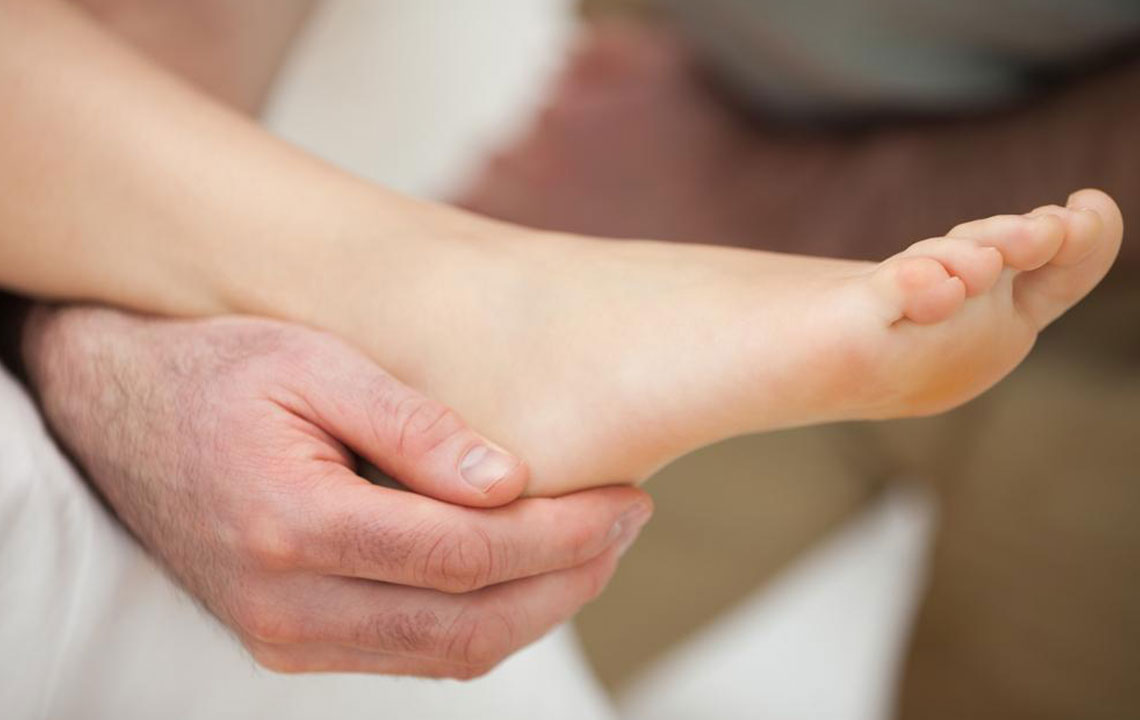Beneficial Treatment Options for a Quick Foot Pain Relief

Our feet go through quite a lot each day; from helping you commute to various destinations, to putting up with the stiletto heels that you choose to sport, and from standing in queues at malls to rehearsing for your dance. Not only will you face difficulties in walking, but foot pain may need you to take painkillers, or compel you to stay in bed the whole day. However, foot pain can happen in a lot of places and can be triggered by many factors; starting from a fracture to stone bruise and a simple heel pain, to an irksome corn pain These can be treated to get some immediate relief from the severe foot pain.
In this article, we take a look at the various foot pain relief therapies available, but first, it is important to analyze and diagnose the reason for your pain and what the main cause for the same.
Most common types of Foot Pain and Healing Remedies
Heel Pain: How Do I Get Complete Relief from It?
In case you are suffering from heel pain, you might be having plantar fasciitis. Plantar fasciitis is actually an inflammation or irritation of the bonds of strong tissues, that are connecting the toes with the heel bones. The heel pain worsens during the morning when you hit the floor after waking up from your sleep. You might feel it in the arch, or in the heel.
Treatment
- Let your footrest for a while.
- Do foot and heel muscle stretches.
- You can resort to painkillers.
- Try buying shoes that have a comfortable cushioned sole and also lends good support to your arch.
Heel Spurs
Heel spurs are simply a kind of foot pain and are characterized by strange bone growth on your heel’s bottom. Heel spurs are triggered by wearing a bad pair of shoes, an abnormal walking posture, or from running, as well. Spurs are painful, especially when you are standing or walking. Most people tend to get heel spurs but don’t usually complain of any pain whatsoever, but people who are more inclined towards high-arches or flat heels, generally suffer from a debilitating pain. Following are a few remedies that will give you a quick relief from the foot pain.
Treatment
- Choose to wears cut-out heel pads.
- Wear shoes that have a perfect and a comfortable fit and is also designed with shock-absorbent soles.
- Rest your foot for as long as you can.
- Try tailor-made inserts known as orthotic, in the shoes that you wear.
- Try opting for physical therapies.
- If you are still facing pain, try seeking medical guidance from your physician.
Stone Bruise
Stone bruise generally takes place at the thick pad of the ball of the foot, or the heels. It is triggered by an injury or from stepping on a hard stone or object lying on the road. The pain feels like a sting when you walk and will usually heal over time. Hence, you will have to search for a remedy that will give a quick relief from the foot pain.
Tips for a speedy recovery from a stone bruise
- Resting is the first and foremost option
- Press ice cubes against the area
- You can also turn to over-the-counter pain-reducing pills
Heel Fracture
Heel fracture is caused by a major injury like a car accident, or a serious fall. The heel bones can literally shatter, besides simply breaking. The symptoms associated with heel fracture are swelling, pain and trouble in walking and bruising.
How To Gain Relief From Heel Fracture?
- Keep your heels protected with pads.
- Don’t apply much pressure on your heels. Take the help of crutches when you walk.
- Consult your doctor for some pain-killers, if the pain really gets on your nerves.
- Try wearing a cast or splint, to keep your heel bones protected.
If after all these remedies, you still feel the pain, you can seek opinions on surgery, from your physician.
Ball of Foot Pain
- Ball of foot pain or metatarsalgia, happens at the ball of the foot, and is the result of bad-fitting shoes and stressful activities like jogging, running etc. Seek immediate treatment for the same for a relief from the foot pain.
Treatment
- Taking painkillers will help alleviate the pain.
- Put an ice bag on the painful area and allow the feet to rest.
- Only choose footwear that is comfortable.
You can choose to try shoe inserts, to reduce the pressure on the ball of the foot.
Sesamoiditis
This happens on your big toes, in the couple of bones which are connected with the help of tendons, called sesamoids. Sesamoids occur when the surrounding tendons are inflamed or injured. It is actually a type of tendinitis and is seen to bother ballet dancers and runners as well.
Treatment
- Resting the foot is the first option.
- Put some ice, in the place, it is hurting.
- Use foot pads underneath your toe, in comfortable and well-fitted shoes.
- Avoid high-heels.
- You can seek your doctor’s help on steroid vaccinations.
- Try taping the big toe to allow immobilization of the joints and speeding the healing process.
Foot pain is triggered by a number of issues, and of all available treatments, the best one is to allow maximum rest, wear properly fitted shoes and massaging the area for maximum foot pain relief.


